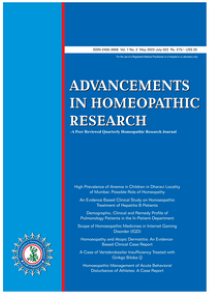Importance of Temperament as Propounded by Stalwarts of Homoeopathy
Keywords:
Temperaments, phlegmatic, sanguine, sanguino-choleric, lymphatic, nervous, biliousAbstract
Background- Roberts says, “Temperaments” implies the stature of an individual, colouring, functional tendencies of circulation, elimination, respiration, mental and emotional tendencies in reaction to environment and circumstances. Temperaments are cast in the beginning of the new individual, when the parent cells first unite, and that once cast, there is no deviation from them, and that what is physiological cannot be influenced or changed by the action of our remedies. There are many combinations of these types, usually with one basic type predominating. Though the initial tendency cannot be changed, but the homoeopathically indicated remedy, prescribed accurately in babies and children, can so modify the physiological tendencies as to prevent their unfavourable ultimates, to a considerable degree. There are four classical temperaments, namely, Nervous, Bilious, Sanguinous and Phlegmatic. .(1)
Objective- The objective is to identify the Importance of Temperament as propounded by stalwarts of Homoeopathy.
Conclusion- A very high importance of temperament has been paid by stalwarts in homoeopathic cure.




